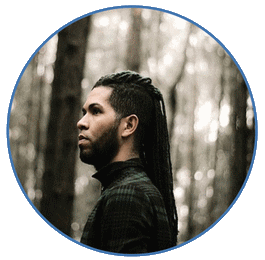Ron Kurtz (1934 - 2011)
Ron developed the Hakomi Method over a period of thirty-nine years, conducting workshops internationally beginning in 1968, and doing trainings since the mid-1970s.
Ron founded the Hakomi Institute in 1981 and Ron Kurtz Trainings, Inc. in 1990, and, with several colleagues, the Hakomi Educational Network (International). He also founded the Ron Kurtz Center in his home town of Ashland, Oregon in September 2010.
He wrote or co-authored three books: The Body Reveals, Body-Centered Psychotherapy, and Grace Unfolding.
In the last decade of his life, Ron continued to evolve and refine Hakomi, drawing from the ever-expanding fields of spiritual and physical sciences.
In 2008 he received a Lifetime Achievement Award from the U.S. Association for Body Psychotherapy.
Ron Kurtz talks in brief about Hakomi. In this 6 minute clip, Ron Kurtz talks about the Hakomi Method of Mindfulness Based, Assisted Self Study in an interview with Craig Comstock.
Loving Presence and the Hakomi Principles
Loving presence incorporates into a single concept much of what Hakomi used to present in terms of the “principles”. If we briefly review the principles with respect to how each one translates into specific ways of being with the client, we’ll see this…
 Organicity
Organicity
Organicity refers to the fact that complex living systems, such as human beings, are self-organizing and self-directing. In the psychotherapeutic world, this inner thrust has sometimes been referred to as the actualizing tendency. It is akin to what A. H. Almaas calls the “dynamic optimizing thrust of being”.
This means that, as practitioners, we can assume there is a life-positive, self-directing, self-healing energy and intelligence at work within the client. Our task is simply to create the setting, the emotional climate that facilitates the emergence of this natural impulse toward health and to remembering wholeness.
Mindfulness
Mindfulness refers to the understanding that real change comes about through awareness, not efforting. When we are truly aware of our experience, when we have what focusing (Eugene Gendlin’s work) calls the “bodily felt sense” of it, our experience naturally reveals its inherent meaning, and it continues evolving in a self-directed, life-positive direction.
As practitioners, we trust that if we can assist the client into her present-moment somatic experience, then her own awareness will facilitate whatever change or next step needs to occur.
 Non-violence
Non-violence
Non-violence is being mindful of the principle and presence of organicity. It’s the recognition that there is a natural way that life is unfolding, and aligning ourselves with this organic, intelligent process. As practitioners, this means we have no agendas or intentions of our own that we aren’t willing to abandon at once if they somehow conflict with what is emerging from the client.
It means we support the client’s so-called defences (her “management behaviours”); we don’t offer advice or interpretations; and we don’t ask questions unless doing so serves the client.
Holism
Holism refers to the complexity and inter-relatedness of organic systems, including human beings, with our minds and bodies, hearts and souls. It is what allows us to holographically read a person’s life story in her posture or tone of voice, to infer an entire childhood from a single memory, to suspect certain core, organizing beliefs from simple repetitive gestures or words.
Unity
 Unity reminds us of the inter-connectedness of all things, of all life, of all events. It is holism on a universal scale. As practitioners, unity reminds us of the ever bigger picture, of the fact that we are intimately connected to each other, and connected to our culture, our environment, our world.
Unity reminds us of the inter-connectedness of all things, of all life, of all events. It is holism on a universal scale. As practitioners, unity reminds us of the ever bigger picture, of the fact that we are intimately connected to each other, and connected to our culture, our environment, our world.
Ron Kurtz says that you don’t really have to “learn” the Hakomi method; that if you ground yourself in these five principles then the Hakomi method, with its particular style and feel and way of being with others, will naturally emerge as your way of working with clients.
Hakomi is a product of living, thinking, and feeling in terms of the principles, in alignment with the principles. In the same way, we can say that we don’t have to try and learn to be in a state of loving presence. Rather, loving presence is an attitude that will naturally emerge in us as we come to deeply understand these universal spiritual principles, principles that are, in effect, the true theoretical underpinnings of Hakomi.
A Video Interview about Hakomiwith Donna Martin and Wendy Wildfong This video is posted on Wendy Wildfong’s YouTube channel. If you wish to view it directly on YouTube, there are also some other interviews there between Donna and Wendy, illuminating aspects of the Hakomi Method. |
